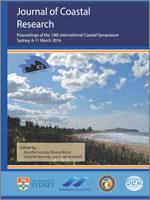Park, J.-H.; Kim, Y.S.; Lee, H.J.; Lee, H.-Y.; Ha, H.K.; Park, Y.-G.; Jeon, C., and Hirose, N., 2016. Internal tide-induced enhancement of cold water intrusion on the continental shelf of the Korea Strait. In: Vila-Concejo, A.; Bruce, E.; Kennedy, D.M., and McCarroll, R.J. (eds.), Proceedings of the 14th International Coastal Symposium (Sydney, Australia). Journal of Coastal Research, Special Issue, No. 75, pp. 542–546. Coconut Creek (Florida), ISSN 0749-0208.
The Korea Strait bottom cold water (KSBCW), characterized by its temperature < 10°C, is believed to originate from the deep basin of the southwestern East/Japan Sea with a maximum transport in August/September. Although previous studies have suggested possible causes of the enhanced KSBCW intrusion in summer, its mechanism is not yet clear. Here we investigate if tides can affect the strength of KSBCW intrusion using numerical simulations. We utilize a high-resolution regional ocean model with 1/108° grids, covering the Korea Strait and the southwestern East/Japan Sea. Numerical simulations are conducted for several cases, which include semidiurnal tides (M2 S2), diurnal tides (K1 O1), and wind forcings differently to examine their effects on the intrusion. Simulation results reveal that the energetic semidiurnal internal tides, generated around the continental shelf in the northern part of the Korea Strait, can induce the KSBCW intrusion by the internal tidal pumping effect. Two cases including the four major tides reproduce at best a dome-shaped bottom cold water lower than 10°C impinging on the slope southeast coast of Korea, consistent with historical monthly-mean temperature fields. Long-term ferry boat ADCP measurements (> 10 years) across the Korea Strait show that southwestward KSBCW intrusions get stronger 2–3 days after spring tides in summer and fall when the semidiurnal internal tides are strengthened, supporting our simulation results. We therefore propose that the maximum KSBCW intrusion in August/September is caused by the energetic semidiurnal internal tides.





